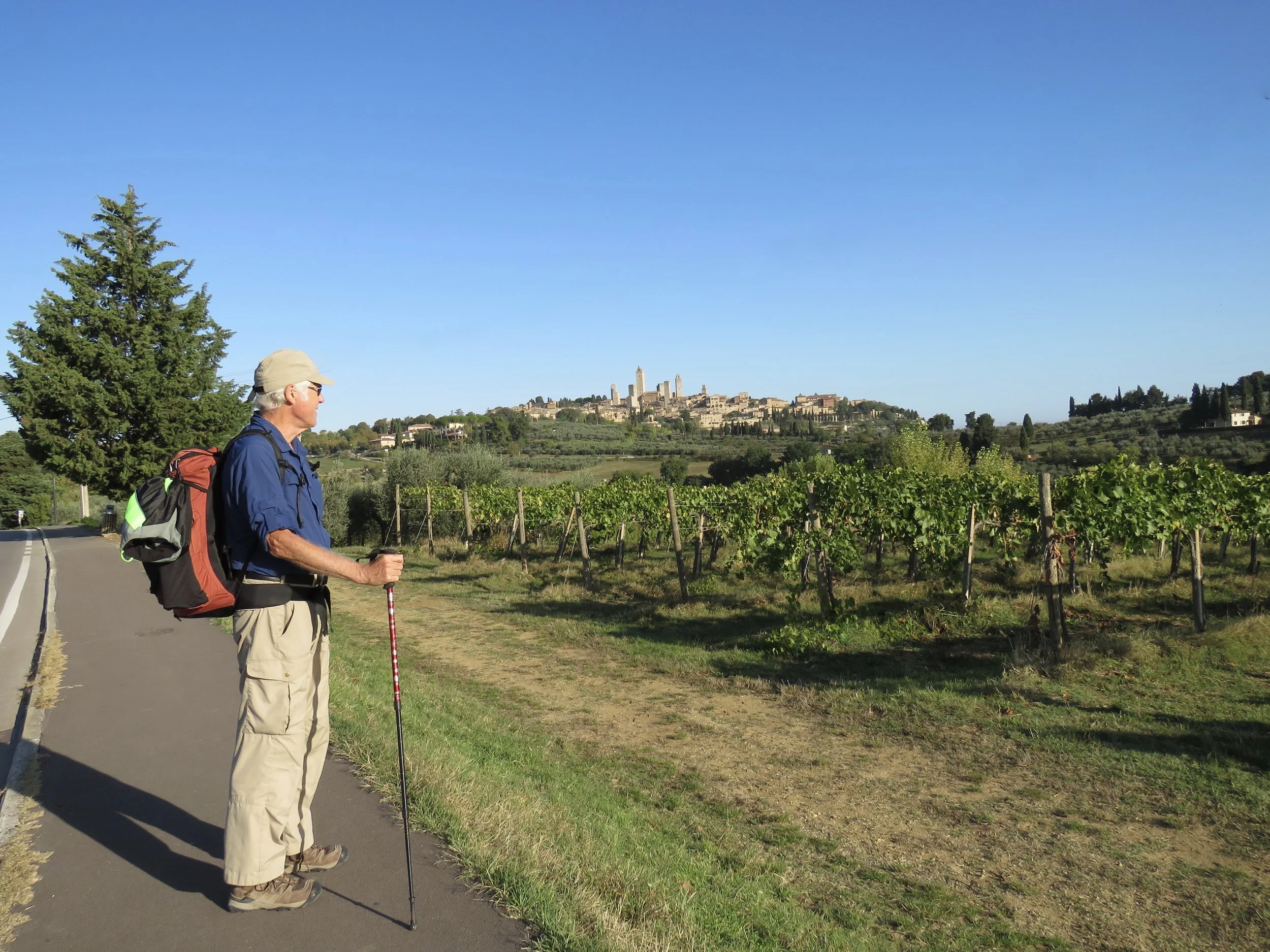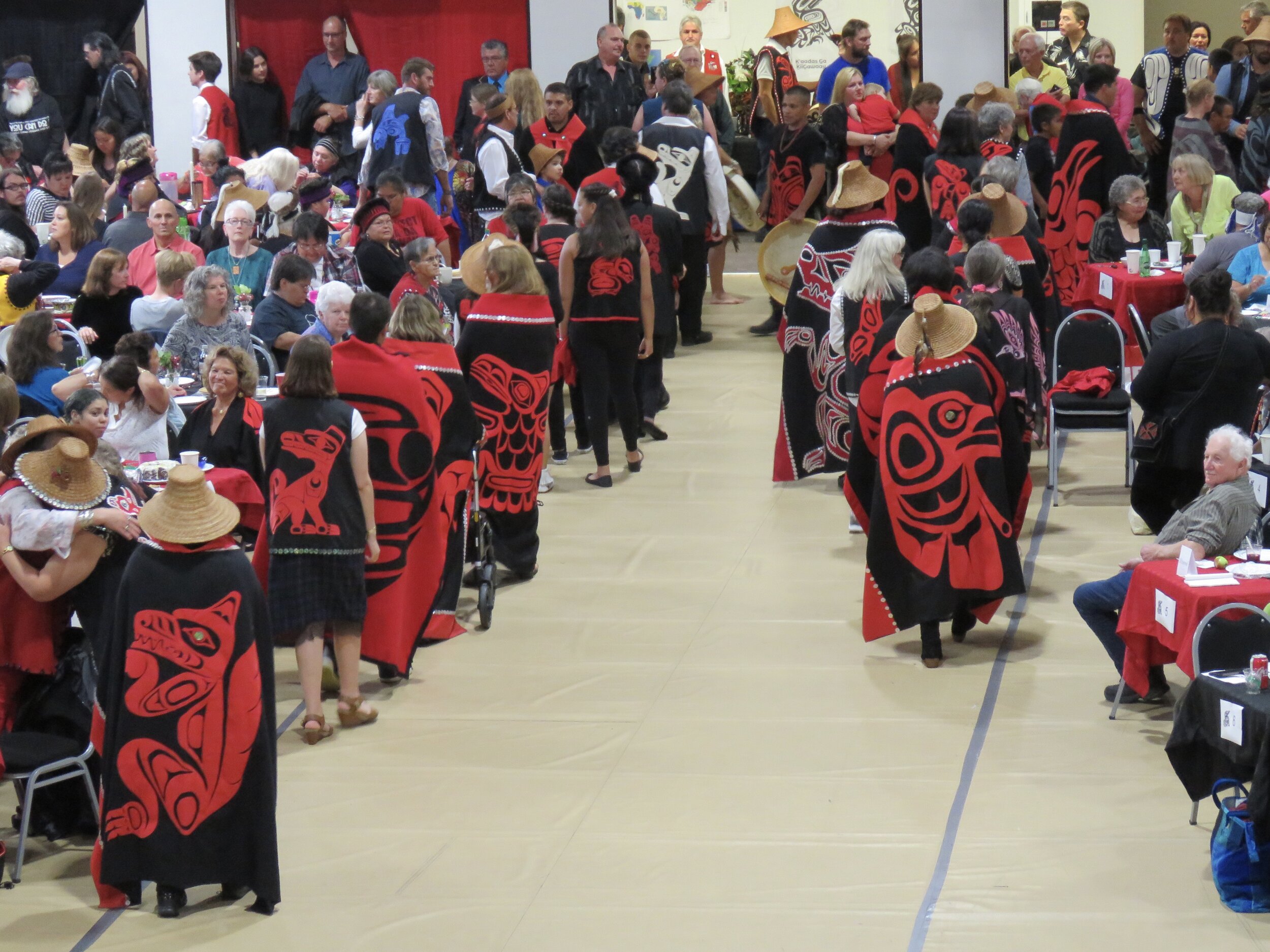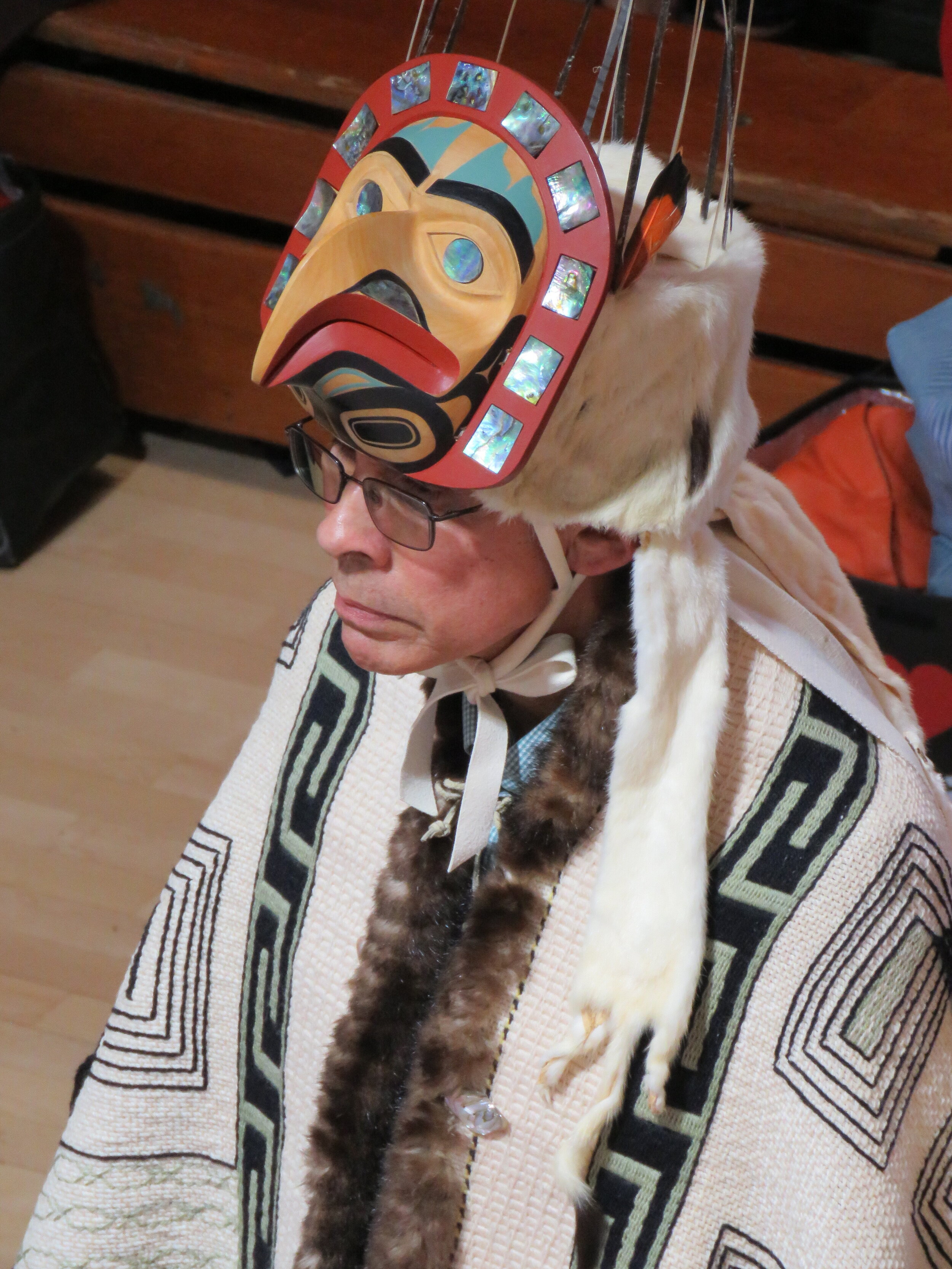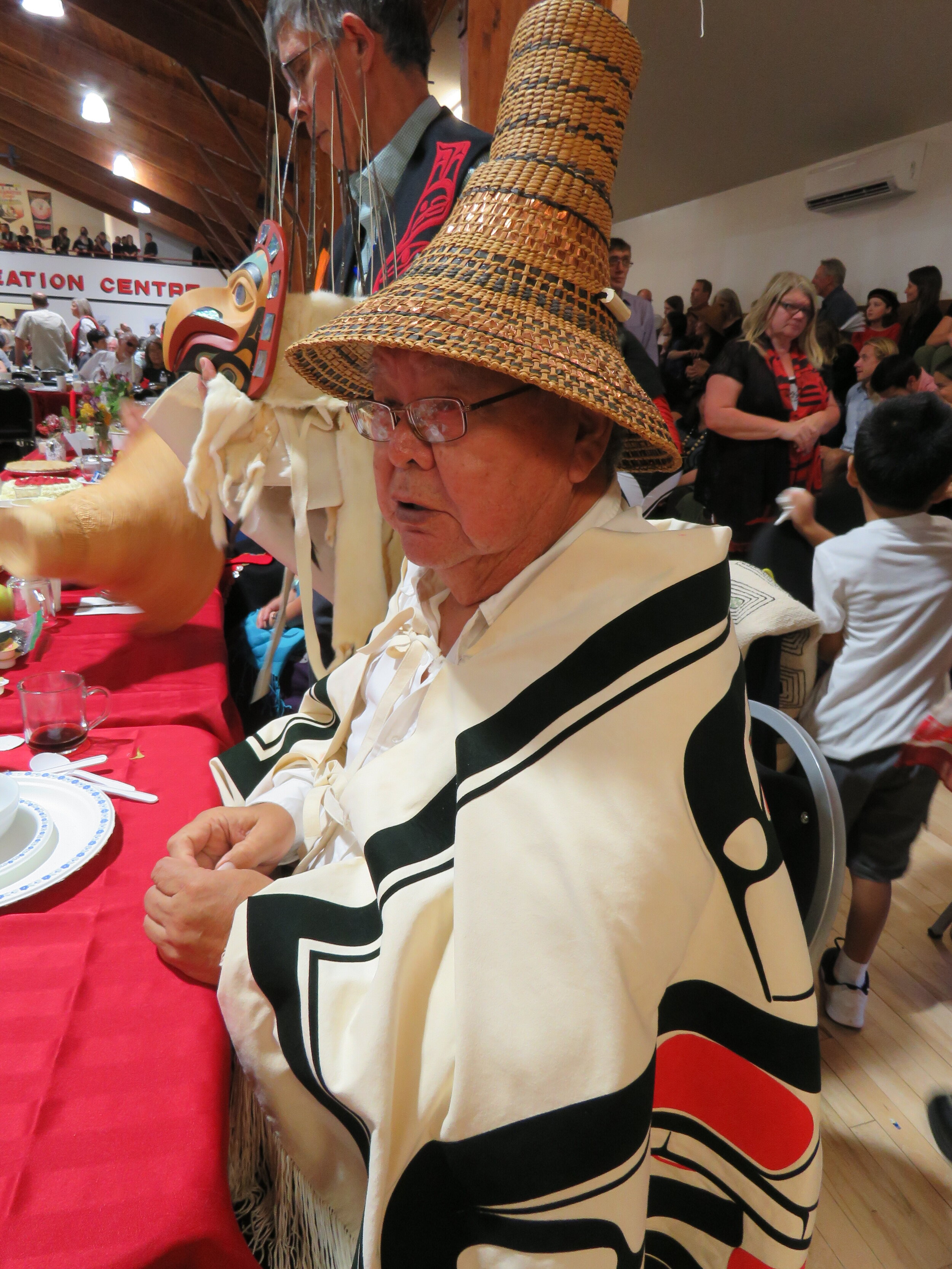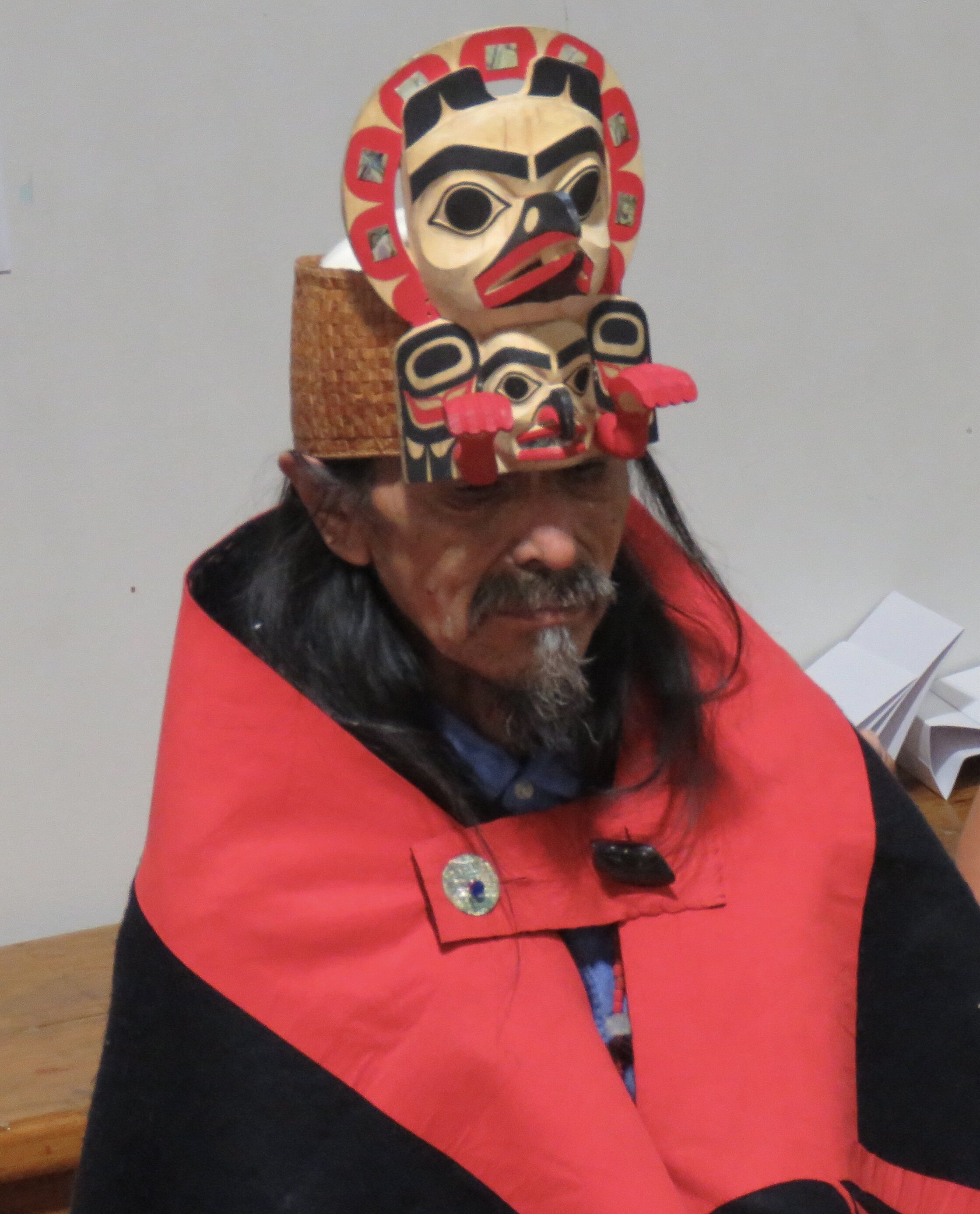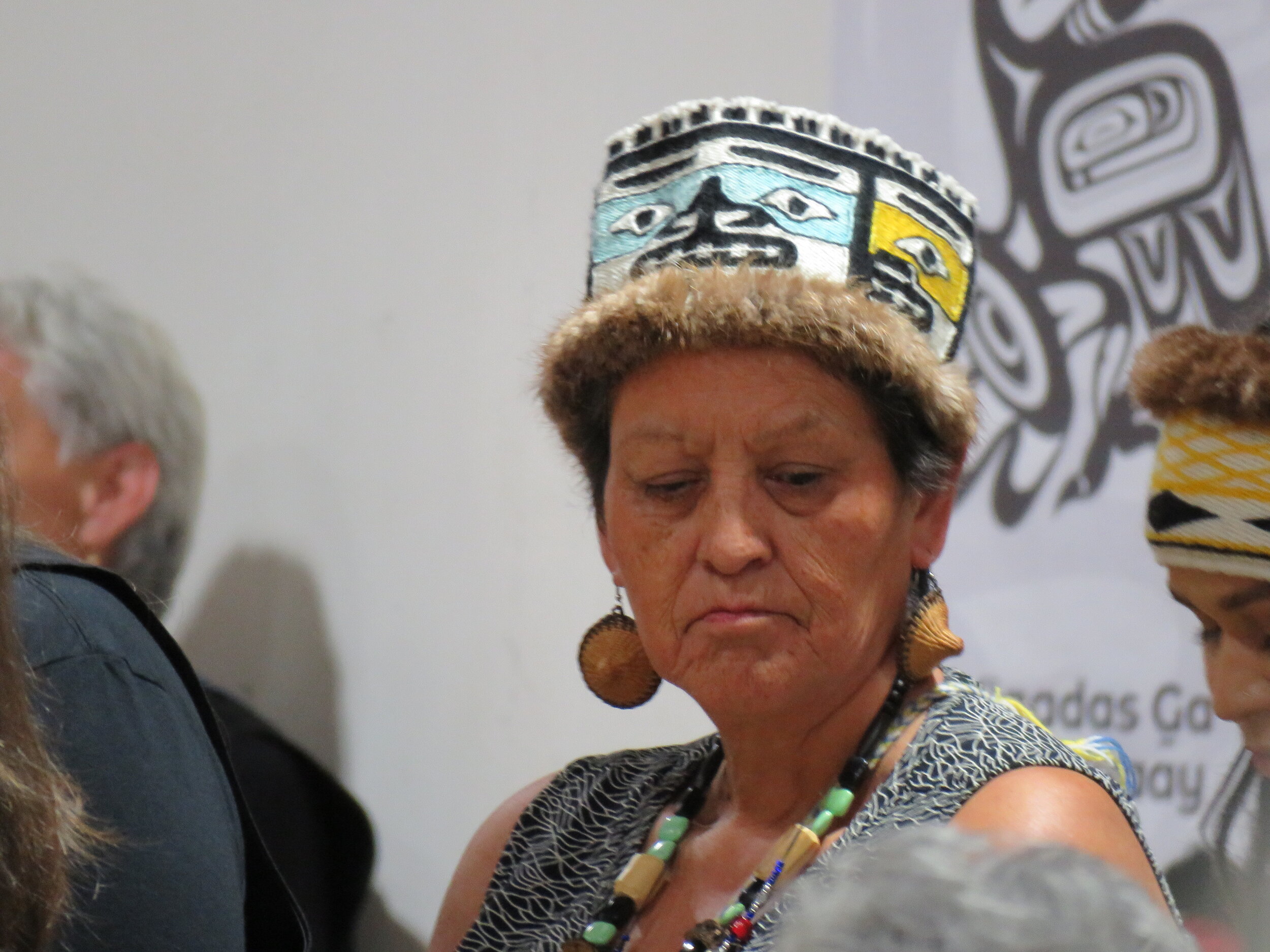But then the festivities were ready to start. Some 400 people witnessed this potlatch. We were all seated at long tables laden with pies, plates and cutlery. First the room was cleansed through a smudging ceremony at which smoke was danced through the hall to clear the bad words and feelings.
The new chief, surrounded by close family, made his entrance wearing a regular shirt, jeans and mukluks. Then the women closest to him, perhaps his mother or aunties, took newly designed Haida vest and blanket and held them up for all to see. They dressed him, finishing with the carved wooden headgear framed by ermine skins. The top of the headgear was filled with eagle down. When I searched for the significance of this I found the following explanation:
The Haida Peace and Welcome Dance is a traditional dance performed by hereditary chiefs at a Haida potlatch. The welcoming chief wears a robe or colorful button blanket displaying his family crest. Eagle down held in the crown of the eagle frontlet headdress, which is adorned with trailing ermine fur and inlaid abalone shell, is shaken out to float gracefully in a cloud around the dancer during his performance. The eagle down signifies peace and is considered a gesture of welcome from the Haida to their guests. The guest chief would often perform a similar dance in response. If the dances were held inside the Longhouse, the light from the central fire would reflect and flicker on the inlaid abalone shell in the eagle frontlet headdress.’
